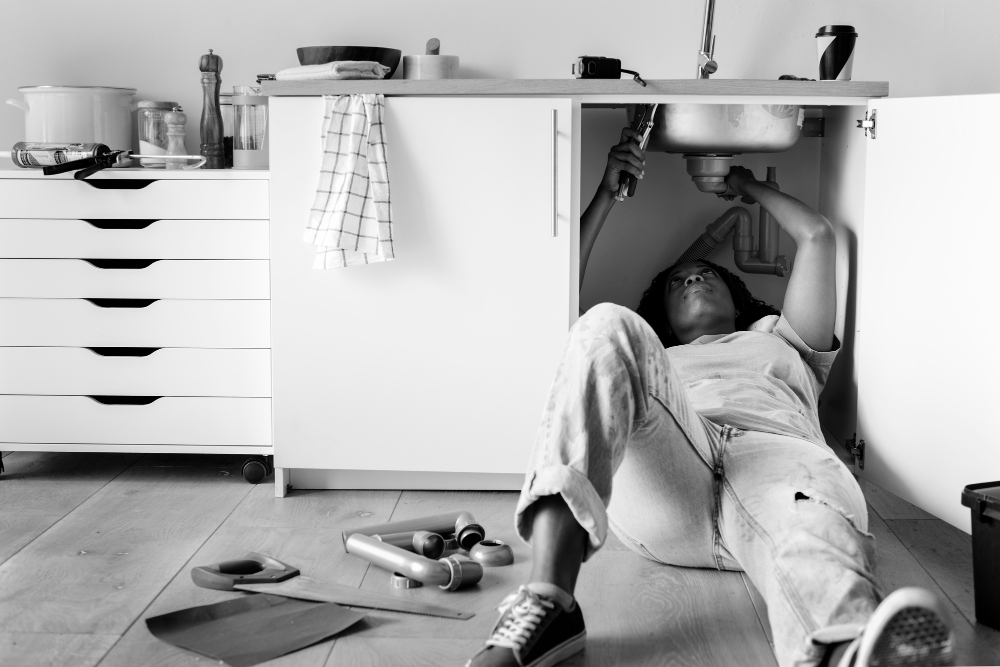Plumbing issues are some of the most common and often the most frustrating problems homeowners face. From leaky faucets to clogged drains and burst pipes, plumbing failures can disrupt your daily life, cause significant damage to your property, and lead to costly repairs. While some plumbing issues may arise due to natural wear and tear, many can be avoided with proper care and maintenance.
In this article, we’ll explore the most common plumbing problems in residential homes and provide tips on how to prevent them from happening in the first place. By taking a proactive approach to plumbing maintenance, you can save yourself a lot of headaches—and money—in the long run.
1. Clogged Drains
Clogged drains are one of the most frequent plumbing issues faced by homeowners. Kitchen sinks, bathroom drains, and showers are all prone to getting clogged over time, mainly due to the buildup of grease, food particles, hair, soap scum, and other debris.
Causes of Clogged Drains:
- Kitchen Sinks: Grease, fat, and food particles often find their way into kitchen sinks. Over time, these substances accumulate and harden, creating blockages.
- Bathroom Drains: Hair, soap residue, toothpaste, and even small items can clog bathroom drains, especially in the shower or bathtub.
- Toilet Drains: Flushing non-degradable items like wipes, cotton balls, or sanitary products can result in blockages that are tough to remove.
How to Avoid Clogged Drains:
- Use Drain Screens: Install drain screens or hair catchers in your bathroom sinks and showers to prevent hair and soap scum buildup.
- Dispose of Grease Properly: Avoid pouring grease or fat down the kitchen drain. Instead, dispose of it in the trash.
- Regularly Flush with Hot Water: For kitchen sinks, run hot water through the drain after each use to help break down any grease and prevent buildup.
- Use Drain Cleaning Products Sparingly: While chemical drain cleaners can work in a pinch, they can also damage your pipes over time. Instead, try using a mixture of baking soda and vinegar for natural cleaning.
2. Leaky Faucets
A leaky faucet might seem like a minor annoyance, but it can waste a significant amount of water and increase your water bills. Over time, a dripping faucet can waste gallons of water, which is both environmentally unfriendly and costly.
Causes of Leaky Faucets:
- Worn Out Washer or O-Ring: The most common cause of a leaky faucet is a worn-out washer or O-ring inside the faucet mechanism, which causes water to leak.
- Corroded Valve Seat: Over time, the valve seat (the part that connects the faucet to the spout) can corrode due to mineral buildup, causing leaks.
How to Avoid Leaky Faucets:
- Fix Leaks Promptly: If you notice a dripping faucet, fix it right away. This can usually be done by replacing the washer or O-ring.
- Install Water Softeners: Hard water can contribute to mineral buildup inside the faucet components. Installing a water softener can help reduce mineral deposits and prevent corrosion.
- Don’t Over-tighten Faucets: Over-tightening a faucet can cause damage to the internal parts and lead to leaks. Tighten the faucet just enough to stop the water flow without excessive force.
3. Running Toilets
A constantly running toilet is another common plumbing problem that can waste a lot of water and increase your water bill. The sound of running water can be irritating, and the problem is often a simple fix.
Causes of Running Toilets:
- Faulty Flapper Valve: The flapper valve is responsible for sealing the toilet tank to prevent water from continuously flowing into the bowl. If the flapper valve becomes worn out or doesn’t seal properly, water keeps running.
- Malfunctioning Fill Valve: If the fill valve doesn’t shut off when the tank reaches the correct water level, the toilet will continue to run.
- Corroded Overflow Tube: If the overflow tube inside the tank becomes corroded, it may cause water to flow continuously.
How to Avoid Running Toilets:
- Check and Replace the Flapper Valve: Inspect the flapper valve periodically and replace it if it becomes worn out or damaged.
- Inspect the Fill Valve: Make sure the fill valve is functioning correctly. If the water level in the tank is too high, it can cause the toilet to run. Adjust the fill valve to ensure the water level stays at the proper height.
- Install a Toilet Repair Kit: If you’re unsure about fixing the issue yourself, consider installing a toilet repair kit, which contains everything you need to replace the faulty components.
4. Low Water Pressure
Low water pressure can make it difficult to take showers, wash dishes, or perform basic household tasks. Several factors can contribute to low water pressure, including pipe blockages, leaks, and problems with the water supply.
Causes of Low Water Pressure:
- Clogged Pipes: Over time, pipes can accumulate sediment, mineral deposits, or rust, which can clog the pipes and restrict water flow.
- Leaky Pipes: Leaks in the pipes can reduce water pressure by diverting water away from where it should be flowing.
- Faulty Pressure Regulator: In some cases, a malfunctioning pressure regulator can cause water pressure to drop.
How to Avoid Low Water Pressure:
- Clean Showerheads and Faucets: Mineral deposits can clog showerheads and faucet aerators, reducing water pressure. Clean them regularly with a vinegar solution to remove buildup.
- Fix Leaks Promptly: If you notice any leaks in your pipes or fixtures, repair them immediately to prevent water loss and pressure drops.
- Have Your Pipes Inspected: Older homes with galvanized pipes may be more prone to blockages or rust. If you suspect your pipes are clogged, consider having them professionally cleaned or replaced.
5. Burst Pipes
Burst pipes are one of the most serious plumbing issues, and they can cause significant water damage to your home. Pipes can burst due to freezing temperatures, old pipes, or even excessive water pressure.
Causes of Burst Pipes:
- Freezing Temperatures: In winter, water inside pipes can freeze, causing the pipes to expand and eventually burst.
- Aging Pipes: Over time, pipes become more susceptible to cracking and bursting due to corrosion, wear, or damage.
- High Water Pressure: Excessively high water pressure can put stress on your pipes and lead to bursts.
How to Avoid Burst Pipes:
- Insulate Exposed Pipes: During the colder months, insulate pipes in unheated areas (like basements and attics) to prevent freezing.
- Maintain Consistent Water Pressure: Have your home’s water pressure checked regularly. If the pressure is too high, install a pressure-reducing valve to protect your pipes.
- Replace Old Pipes: If you live in an older home with galvanized pipes, consider replacing them with modern materials like copper or PEX, which are less prone to corrosion and damage.
6. Water Heater Problems
Water heater problems can cause major disruptions in daily life, whether it’s running out of hot water or experiencing inconsistent temperatures. Understanding how to avoid common water heater issues can save you from unexpected breakdowns.
Causes of Water Heater Problems:
- Sediment Buildup: Over time, sediment can build up in the bottom of the tank, reducing the efficiency of the water heater and potentially causing it to fail.
- Corrosion: Corrosion on the tank or heating elements can cause leaks and inefficiency.
- Thermostat Malfunctions: A malfunctioning thermostat can cause inconsistent water temperatures.
How to Avoid Water Heater Problems:
- Flush the Tank Regularly: Flushing the tank once a year can help remove sediment buildup and improve the efficiency of your water heater.
- Check the Anode Rod: The anode rod inside the water heater protects the tank from corrosion. Inspect it every couple of years and replace it if it’s worn out.
- Set the Thermostat to a Safe Temperature: Set your water heater thermostat to around 120°F to prevent overheating, reduce energy consumption, and avoid scalding.
Conclusion
Plumbing problems are inevitable, but many of the most common issues can be avoided with proactive maintenance and the right care. By taking simple steps like monitoring your drains, fixing leaks promptly, inspecting your pipes, and maintaining your water heater, you can significantly reduce the risk of costly plumbing failures in your home. Regular inspections and routine maintenance will not only help keep your plumbing system running smoothly but also extend the lifespan of your fixtures and pipes.
Remember, when in doubt, it’s always best to call a professional plumber. They can help with more complex issues, provide advice on long-term maintenance, and ensure your plumbing is functioning at its best.

